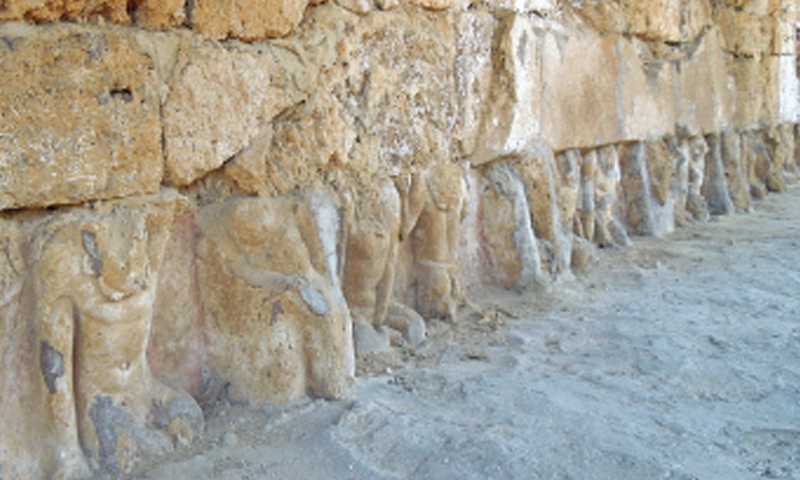The historic Dharmarajika Stupa is located just 3km from Taxila Museum. It is not merely a stupa but a complex, having a central stupa, with several small stupas, temples and other ancient remains. Dharmarajika, commonly known as ‘Chir Tope’, is considered one of the eight largest Buddhist stupas in South Asia built around the holy relics of the Buddha by Maurya Emperor Ashoka in 3rd century BC. It is located on the bank of Dharma rivulet.
According to historic details, the name Dharmarajika is derived from ‘Dharmaraja’, a title given to Maurya Emperor Ashoka due to his services to Buddhism. According to British archaeologist John Marshall, it was actually the title of the Buddha, who was the true Dharma Raja or Lord of Law. The first excavation at the site was carried out from 1912-16 under the supervision of John Marshall.
Later in 1934-36, another excavation was conducted. Dharmarajika Complex is spread over a wide area with the main stupa about 15 metres high and 50 metres in diameter. Several round-shaped stupas were constructed around the circular structure. Another square shape medium size stupa is also located at a side of the complex, which bears the engraved small structures of Buddha on its outer walls - now in bad shape.
There are several Buddhist temples located in the complex. It is assumed that different structures were constructed around the stupa during different periods. The stupa was badly damaged during the earthquake in 40 AD.
However it was rebuilt twice by the Khushana rulers. Today, the Dharmarajika Complex is in ruins. Most of the artwork and engraved statues are badly damaged and in need of preservation work. Other parts of the complex seem to have been totally ignored and abandoned.
Published in Dawn, November 30th , 2014






















































Dear visitor, the comments section is undergoing an overhaul and will return soon.